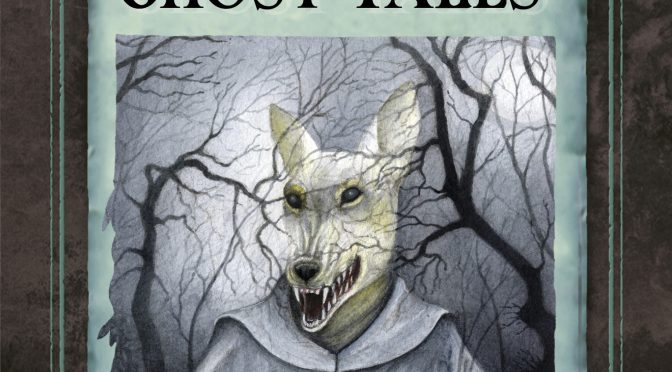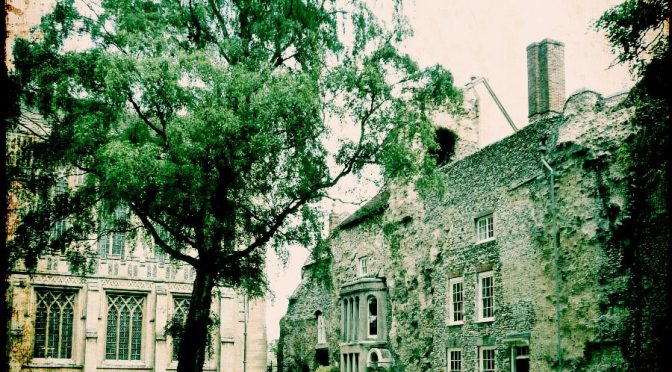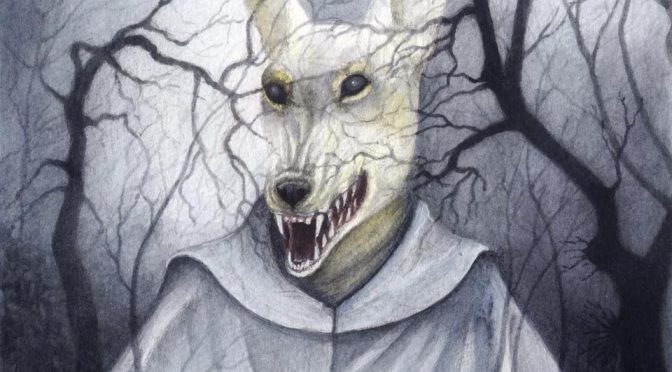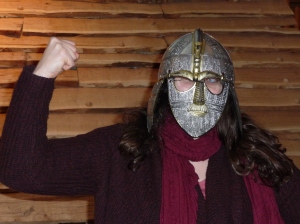Lovely new write up for Suffolk Ghost Tales, with an interview Cherry and I did with Sheena Grant of the East Anglian Daily Times:
Category Archives: Suffolk
Suffolk Ghost Tales for the Dark Nights of Winter
Have a look at this new blog I’ve written for The History Press in advance of Suffolk Ghost Tales coming out on the 13 December about Suffolk’s ghost tales, Suffolk’s most famous ghost story writer, M R James and the tradition of telling ghost stories at Christmas…
‘All places have ghost stories. Laurie Lee, in Cider with Rosie, says, ‘There were ghosts in the stones, in the trees, and the walls, and every field and hill had several.’ He’s talking about Gloucestershire, but, even now, a hundred years on from when Lee was a boy, it still holds true across the country. But of all counties, Suffolk is a little bit special when it comes to ghosts…
The low cliffs, pebble beaches and faded hotels of his home county have become fixed in our minds as subtly dangerous places with a hint of folk horror. All those lost places… Visit Dunwich to see the last grave of All Saints teetering on the edge of the cliff, visit Aldeburgh and see the House in the Clouds bright and distant across the marshes, go to lonely Minsmere and see the ruined chapel, all that remains of a monastery and village abandoned, go to Covehithe … if it’s still there.
Suffolk is, after all, the home county of one of the greatest tellers of ghost tales – M R James. James moved to Suffolk aged three, when his father became rector of Great Livermere, up near the Norfolk border. His family lived there from 1865 until 1909, so James had a foot in Suffolk for much of his life. Several of his tales, ‘Oh, Whistle and I’ll Come to You, my Lad’, ‘A Warning to the Curious’, ‘The Ash-tree’ and more, are set in Suffolk, and develop the disquieting aesthetic we now recognise in the landscape.’
Read the rest of the article here:
https://www.thehistorypress.co.uk/articles/suffolk-ghost-tales/
The Secret Disclosed: ghostly riots in Bury St Edmunds
I’m all about ghosts at the moment, what with Suffolk Ghost Tales coming out next week. But this blog is a bit naughty, as it’s actually inspired by the background to a story in my previous Suffolk book, Suffolk Folk Tales. The question is, how do ghosts come to be? You’d think that it would be by someone dying and proceeding to haunt a place, wouldn’t you? But that’s not always the case … sometimes they are conjured up out of the collective mind of the people, and such is the case for the Grey Lady of Bury St Edmunds in Suffolk.
Once upon a time there was a woman by the name of Margaretta Greene. She was a scion of the Greene family of Bury, best known, perhaps, for the brewers Greene King. She lived in a very strange building indeed, a building that had once been part of the vast west front of St Edmund’s Abbey, but was – and is – now houses. So vast was the abbey that just one side of the west front contains these houses, organically emerging out the rubble stone that lay beneath the dressed that was all taken away to build other parts of Bury after the monastery was dissolved in 1539. The Marquis of Bristol, who owned the abbey land from 1806, had the west front converted into houses, as well as beginning the Abbey Gardens we know today. They were nearly destroyed in the 1950s, but fortunately are still with us today.
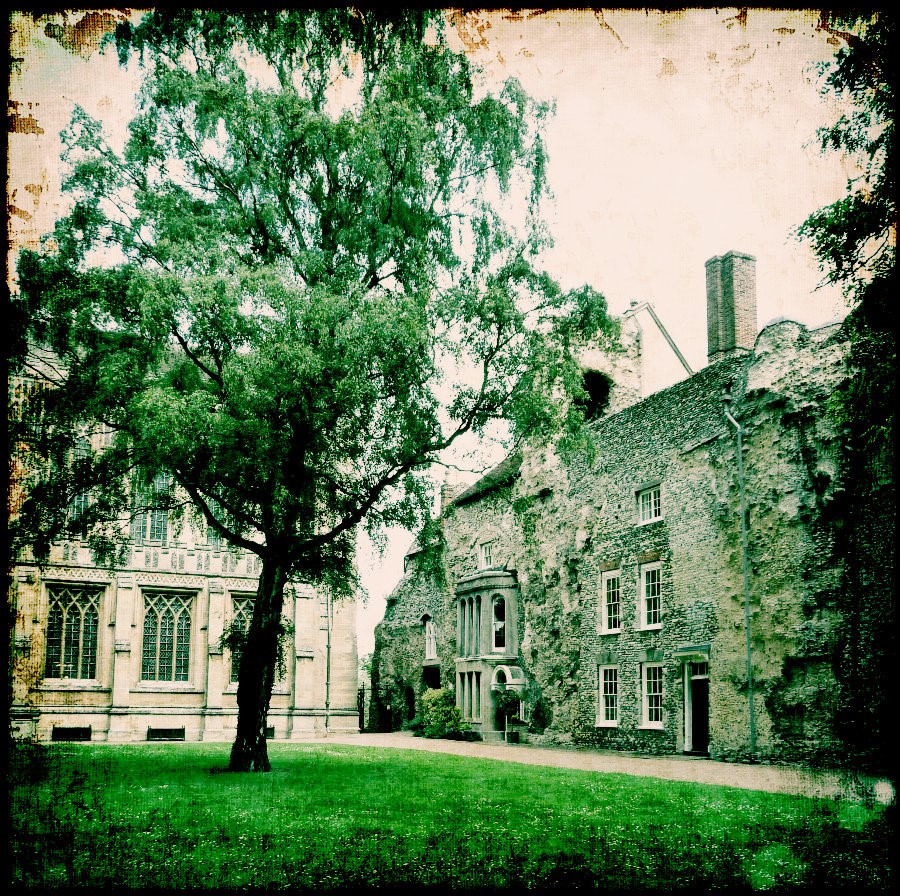
These houses lie close to the Great Churchyard between the abbey and St Mary’s, and it’s easy to imagine the affect this setting might have on a Romantic young woman… In 1861 she privately published a slender volume entitled The Secret Disclosed: A Legend of St Edmund’s Abbey ‘by an Inmate’ telling a sorrowful tale of unrequited love, royal conspiracies, murder, poison, and death in the secret tunnels that were said to lie under the town connecting its religious buildings. The protagonist of this tale, young nun Maude Carew and Queen Margaret of Anjou, the definite baddie in this melodrama, she said, haunted the Churchyard every 24 February at precisely 11pm.
The people of Bury fell for it hook, line and sinker. Well, why wouldn’t they? Margaretta had said that she’d heard footsteps in her house, which had led her to find a casket containing the manuscript which she had simply transcribed … well, it had to be true, didn’t it?
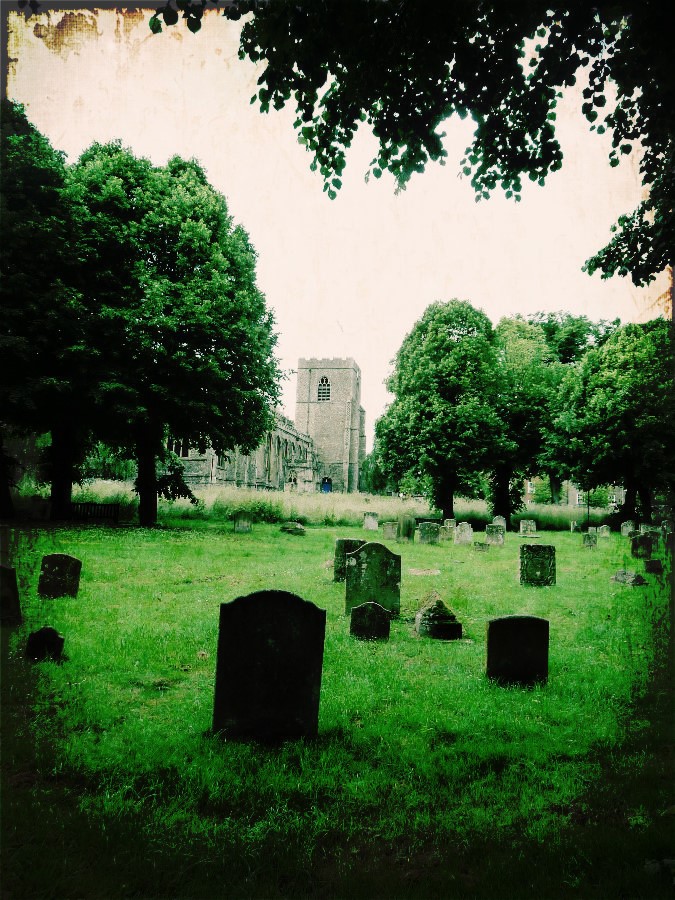
The next 24 February, 1862, a horde of folk gathered in the Churchyard to see the ghosts. Did people really expect to see a ghost? It seems so, as by the time 11pm approached, the crowd was so excited as to be almost hysterical. And when, inevitably, the ghost didn’t appear? Well, some said that it did – but no one could agree on what the ghosts looked like. Were they white? Were they black? The mood turned ugly as the crowd realised they’d been duped. All hell broke loose, the ghost watchers rioted – and indeed a window was broken in Greene’s house.
And yet, Maude Carew, despite being a fictional character, lived on as a ghost in Bury. She became the Grey Lady of Bury, taking over the personalities of other Grey Ladies in the town and roving way beyond her proper haunting ground of the west front and churchyard. Can she possibly be the female ghost who is said to haunt Cupola House in the Traverse, along with the object of her desire, Father Bernard – aka the brown monk? More realistically, a Grey Lady, dressed in the robes of a nun, is said to haunt the Fornham Road area, including St Saviour’s hospital. Now, this isn’t unreasonable, if the story Greene was true, as it was at St Saviour’s hospital that the unfortunate victim in the story, Humphrey, Duke of Gloucester, died that 24 February 1447.
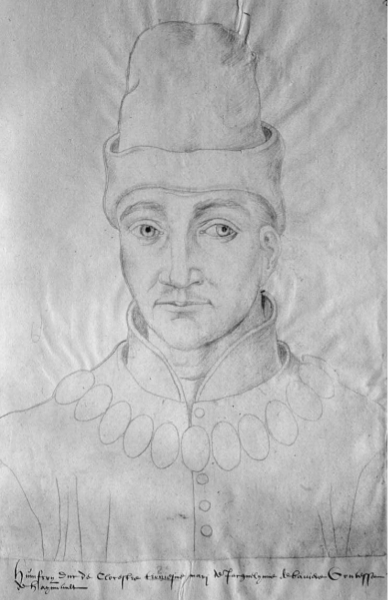
Yes, the tale does have a historic background – one familiar to both students of history and students of literature, as his tale is immortalised in Shakespeare’s Henry VI, Part II. Humphrey, Duke of Gloucester was Henry VI’s uncle, and was Lord Protector, and, after 1435, was heir to the throne. In 1441 his wife, Eleanor, was arrested on a charge of witchcraft, for, with ‘the Witch of Eye’ (no, not the Suffolk Eye, ‘Eye next Westminster’) Margery Jourdemayne, it was prophesised that Henry VI would die that year. Of course, he did not, and this was the end of Humphrey’s career – and Eleanor and Margery’s lives. He was summoned to a parliament at Bury in 1447. There was a rumour Humphrey was poisoned, but he might also have had a stroke, as he lay unconscious for three days after a banquet. If he was poisoned, it’s just as likely that it was by the Earl of Suffolk, William de la Pole, as it was thought that Suffolk’s enemies might rally to Gloucester… And that is what was whispered during Cade’s rebellion in 1450 that saw Suffolk fall from grace, although there is no evidence that he was poisoned. Dark, complicated times – I think we can identify with them!
This story has been taken from Haunted Bury St Edmunds by Alan Murdie (Tempus, 2006). Murdie is a great expert on Bury’s ghosts – and is also the Chairman of the Ghost Club. I fell in love with the tale when I first read it, researching Suffolk Folk Tales back in 2012, and think it sad that A Secret Disclosed isn’t available … anywhere! Not even on archive.org. There is a copy in the Record Office in Ipswich – but what other copies exist? It would be a shame for the ghost to live on, but the original story to die…
Images:
The images of the churchyard and west front are copyright Kirsty Hartsiotis, 2017
Copyright info for the image of Humphrey, Duke of Gloucester can be found here.
Suffolk Ghost Tales – out very soon!
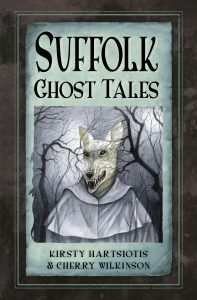 Very exciting news! My new book is out in just a few weeks on the 13 December – Suffolk Ghost Tales, part of The History Press’s ghost tales series. This time, it’s been a really special collaboration – with my mother, Cherry Wilkinson.
Very exciting news! My new book is out in just a few weeks on the 13 December – Suffolk Ghost Tales, part of The History Press’s ghost tales series. This time, it’s been a really special collaboration – with my mother, Cherry Wilkinson.
Here’s the blurb:
SUFFOLK – a peaceful, rural county with big skies, rolling fields, unspoilt beaches, quaint towns and villages. But all is not as quiet as it seems. Could that be the eerie clanking of gibbet chains at the crossroads? Did you see a desolate face at an upper window or a spectral white form lurking in the hedgerow? Cats are not always lucky – and beware a north Suffolk Broad in the still, small hours of Midsummer Night . . .
Kirsty Hartsiotis and Cherry Wilkinson retell, with spine-chilling freshness, thirty fabulous ghost tales from all corners of this beguiling county. So pull up a chair, stoke the fire and prepare to see its gentle landscape in a new light.
Cherry and I moved to Suffolk when I was two, living first near Hadleigh, later in Bury (and a couple of stints over the border in Norfolk, shh). I left, but Cherry still lives in the county, near the coast. Her association goes back long before I was born: her great-aunts who lived in the house next to Lindsey’s little chapel, and through school at St Felix, Southwold and holidays at Sizewell before the power station changed everything… We had a chance to dig more deeply into Suffolk’s heritage a few years ago when I wrote Suffolk Folk Tales (The History Press, 2013).
But there were many places we realised we’d never seen – well, this book has gone a long way to rectifying that. It’s been quite a ride, discovering these wonderful, spooky – often sad, sometimes hair-raising! – stories and working together to create the tales we’ve told. Some you might know well – there’s the story of Toby, the black drummer, and the sad tale of the Lowestoft witches. We’ve travelled all over the county visiting the locations of the tales, talking to the current owners of buildings, and discovering some new stories from people we know.
Suffolk is the ghost county – childhood home of M R James, and the setting for some of his scariest tales. Katherine Soutar‘s wonderful cover illustration hooks into that unheimlich world on the edge of our own… Our tales tread a point somewhere between storytellers’ local legends and the literary ghost story. We hope you will share these stories, too, and keep the tales of the dead alive.
We’re celebrating with a launch event in Wenhaston Village Hall, near Southwold, on the 16 December 12pm. Come and hear tales and songs, and celebrate with a glass of wine!
Sutton Hoo Part 1: the Importance of Place
How important is the place to the story? With local folk tales, it can be everything. Just as in the Australian Dreamtime where locations are mapped and explained through the stories, so in folk tales the place often dictates the story, and the story gives the place a distinctness that once known, can’t be forgotten. Can you pass the place where Black Toby was killed without a shudder? I know I can’t, now – which is a shame as it is very close to where my parents live, on the A12 near Blythburgh. I can’t see Orford Castle now without thinking of the Merman. And Sutton Hoo – well, the very name conjures up another era, of warriors and gold, of monsters and heroes, of poetry and silent ships slicing along the Deben. Does the place match up? And can you now experience the story of the place – and the story of Rædwald, King of East Anglia and Bretwalda of all the Anglo-Saxons – in the landscape?
The first time I went to Sutton Hoo I lost a button. I was really cheesed off – I loved that coat, and it had good buttons with fake Roman emperor heads on them. It was Christmastime, and in my memory the mounds were dusted with a light sprinkling of snow. My friend ran up and down the mounds. I didn’t. I was sulking about the lost button. This was in the days before the visitor centre and the tours, the café and costumed warriors. There was, if I recall it correctly, only the mounds and a signboard. Thrills.
But I should have been more thrilled. I had just finished an MA in Medieval Studies: the Early Medieval World 400-1100. My friend was in the throes of her dphil, also about early Medieval stuff (pesky Vikings), having also done said MA. Not only that, but I had had a truly thrilling Sutton Hoo experience whilst doing my masters. Our tutor had been one of the main players in the dig at the site in the 80s, and when he arranged a trip to London to the British Museum he made sure we were given very preferential treatment. I work in a museum now – I now realise just how preferential this was.
Our little group, all studying Anglo Saxon Art and Archaeology, were invited into a room with a large table on which were shown various pieces of the famous Sutton Hoo treasure. One of the shoulder clasps was passed around, and I got to put the pin into the loops to join the two halves together. You have to be very impressed that I managed to type that without putting it in capitals. It was amazing. A really key moment in my life, up there with seeing the Grand Canyon, living in Venice, the bliss of swimming in the sea in Greece and standing in MoMA surrounded by Les Demoiselles d’Avignon, Sunflowers, I and the Village and The Sleeping Gypsy. The jewels are stunning in a display case – but how much more beautiful when held in your hand so you can see the perfection of the cloisonné and the delicacy of the filigree work on the pin? The sense of connection I felt with both the goldsmith and with the wearer was one of the most intense I have ever felt – the chance to handle the real thing. Walter Pater talks of objects have an ‘aura’, and having worked in museums for over two decades now, I believe strongly that that is true – but often you need both the story and the object to get that numinous feeling of connection. William Wordsworth’s pen without Wordsworth is just a pen. But these ancient things stir you even without a named owner – but you need that hint of story, a story imparted by the boars and the knotwork and the gold of the shoulder clasps, and by our knowledge of Norse gods and Beowulf.
But what about the place now? These two trips just described took place in the mid-1990s. Sutton Hoo now is a much more exciting experience. Of course – it is now an ‘experience’ and thus you have to pay, but my feeling is, that in this case, it’s worth it. I don’t always think that – I still don’t think they have things quite right at Stonehenge. Unlike Stonehenge and Newgrange, the mounds are a quick walk from the visitor centre. Hardly anyone visited before. I was in my early 20s before I first went, and I didn’t go back until after the visitor centre was built. Mum and I proved how quick a walk it was on one of the field trips for the book, as it was bloody freezing when we went, so a route march around the mounds taking record shots was undertaken, pretty much alone as the biting wind and spitty rain assailed us. Hey ho – not one of my most exciting trips, though atmospheric! Too atmospheric…
I really like the visitor centre. The temporary displays – well not so much! Come on British Museum – lend some of the good stuff! Oh no – you can’t can you? – you’ve slapped it all into your shiny but sadly rather dull display in London. I love that you can walk right into the replica burial chamber and see all the things laid out. It’s interactive in the best way – it puts you in the story in your imagination. But, no longer can you go out onto the mounds to conjure up the spirits of the dead into a procession of warriors carrying the body of their beloved king up the hill from the river and across the graveyard to the ship that has been prepared to take him to the next world, there to either feast with his fellows in Valhalla or, possibly, go to singing the praises of the Lord for eternity.
I should have been more alert when I visited with my friend back in the 90s. Because now, like at Stonehenge, like at Newgrange, your visit is a managed experience with interpretation and guided tours giving you the received wisdom on the site. But half of the pleasure of going on field trips for this project – as well as the previous ones over in the west – is using the imagination to conjure the scene for yourself while stripping back the centuries to try to reveal how the landscape looked when the story took place. At Sutton Hoo now it is more difficult to tell the story to yourself, and for many people that’s fine as they wanted to gain information about the site and the people who are – were – buried there. But it’s difficult to experience the unique atmosphere of this estuarine hillside, shrouded by tall trees when you are listening to a guide. Difficult too to fully experience the site without the guide as you can no longer get onto the mounds without one…
Some of the most magical field trips for this project were in forgotten places – a snowbound wood next to Pin Mill’s Butt and Oyster, searching for dragons on a hot hillside, poking about the farm near my old home in Layham, exploring a hidden Ipswich. But I’m lucky – I went with information and knowledge already locked in my head. And I know Rædwald well – I’m both a historian and a storyteller. Guides and interpretation are good – just let us have the personal experiences as well.
Images © Kirsty Hartsiotis, 2012

